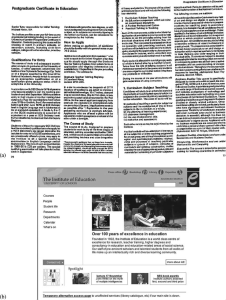Framing
Kress begins the piece by stating two “central assumptions”:
Central assumptions of multimodal approaches to representation and communication are (a) that communication is always and inevitably multimodal; and (b) that each of the modes available for representation in a culture provides specific potential and limitations for communication. (5)
Palmeri speaks to this first point in Remixing Composition: A History of Multimodal Writing Pedagogy when he argues in Part One that “Composition Has Always Already Been Multimodal.” Defining multimodality as something new cheapens its rich history in writing and composition. Indeed, just holding a conversation with someone involves multiple modes of expression – speech, image, sound, and gesture. The second central assumption has to do with the affordances and aptness of media, affordances being the particular strengths and weaknesses of a medium and aptness being the appropriateness of design choices given the social situation and resources available.
In particular, it seems evident to many commentators that writing is giving way, is being displaced by image in many instances of communication where previously it had sway … This realization calls forth a variety of responses, mostly negative, ranging from outright despair, anger, and nostalgia to some still utopian voices on the other end of the spectrum. (5)
The revolution of media, the shift from print to image, has caused alarm in composition on both sides of the aisle. Some traditionalists lament the rise of electronic communication and the concurrent supposed demise of student literacy. Students’ writing has become marred by “textspeak” – slang, abbreviations, emoticons, lack of punctuation. On the other side of the aisle, the “utopian voices” wholeheartedly embrace technology, some even welcoming the demise of print.
The Logic of the Page vs. The Logic of the Screen
Kress illustrates this revolution in media by comparing a London Institute of Education promotional brochure from 1992 with a screen-image of their website from 2005. The prospectus has a fixed reading path. The document is read from left to right and ordered hierarchically in terms of the structure of the institution. The prospectus assumes the life-world of the prospective student, that “the structure of the institution and of its knowledge [are] identical with the needs of the life-worlds of the individuals who might come to it as its students” (Kress 9). The prospectus gives the impression students must conform to the rules and organization of the institution.
The semiotic landscape in 2005 is drastically different. Instead of being read from left to right, the website contains multiple entry points, ways to navigate the page. “Reading” a website becomes an act of creative design. Images are the dominant mode of text on the website, while print text serves a secondary role. The designers of the webpage make no assumptions about the life-worlds of perspective students, as the audience of the website cannot be completely determined. Also, there is much more emphasis on students and student life as opposed to the organizational structure of the institution.
From Critique to Design
It [Critique] challenges the existing configurations of power and expects that in exposing inequities more equitable social arrangements could be developed. In terms of representation that would amount – at that time when the focus was clearly linguistic – to lessening the effects of power and its realization in linguistic form … Now, in the early part of the 21st century, there is no need for bringing the social into crisis: it decidedly is. (Kress 17)
This fourth section of “Gains and Losses” has had a profound impact on my thinking. Kress charts the shift from “competency” or “mastery” of knowledge in the 1950s to the new era of critique starting in the 1960s and 70s. Kress argues that this form of social critique, meant to bring our social institutions into crisis, is now making matters worse, as all of our social institutions are already in a state of crisis. Now pointing out unequal power relations in language is the dominant form of cultural capital, yet I do not think merely pointing out disparities in language goes far enough in the indictment of unequal power relations. Indicting linguistic inequalities almost always leaves unequal power structures in tact.
Reflection
Kress’s “Gains and Losses” has provided me with a theoretical framework for multimodal pedagogy. The essay also provides a vivid description of contemporary society with implications for education, as we move from a print-based to screen-based culture, and all the cultural ramifications this shift entails.
In the classroom, I have taken from this essay to teach students the differences between the logic of the page and the logic of the screen. Specifically, terms such as reading paths, entry points, and life-worlds, as well as navigating websites as an act of design, has framed classroom discussions and analyses of screen-based texts. Although some may worry that what Kress advocates will distract educators from the traditional goals of composition, I continue to keep in mind what Kress says, “The elites will continue to use writing as their preferred mode, and hence, the page in its traditional form” (18). Teaching writing and critical thinking is still my main concern, yet an understanding of our contemporary rhetorical situation helps create a relevant and responsive pedagogy.
Works Cited
Kress, Gunther. “Gains and Losses: New Forms of Texts, Knowledge, and Learning.” Computers and Composition 22.1 (2005): 5-22. Web.

